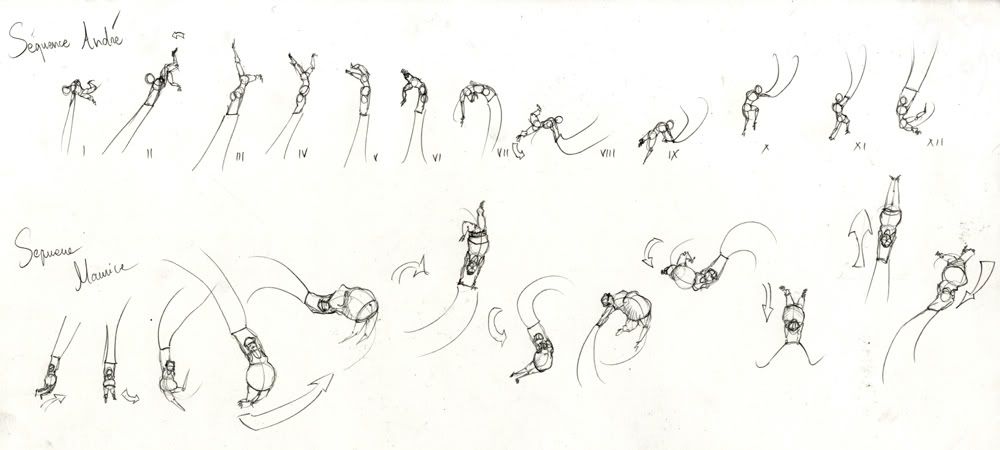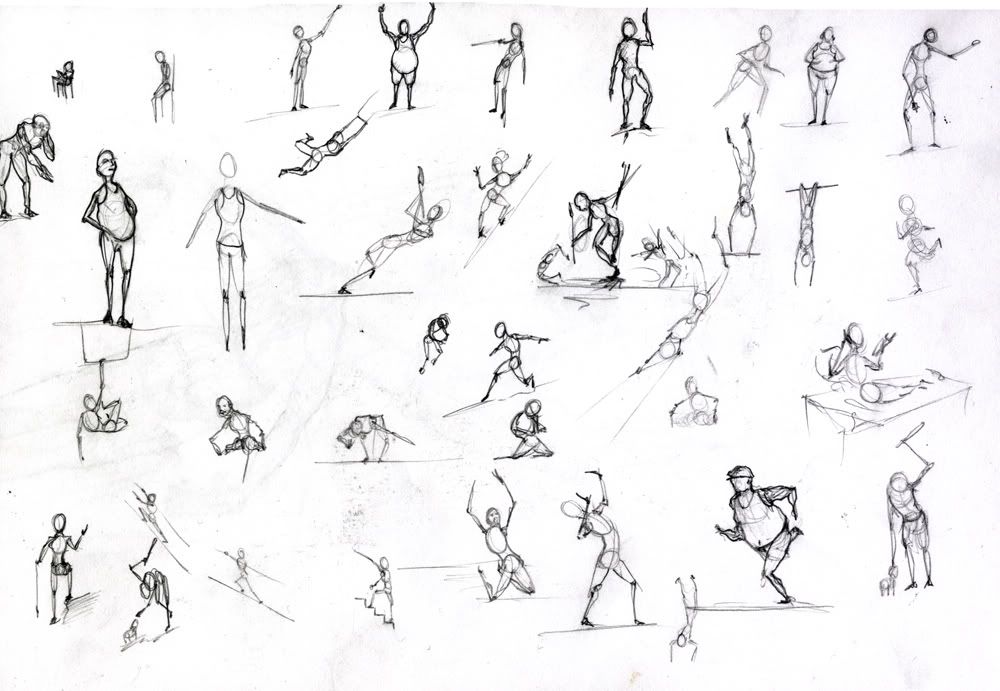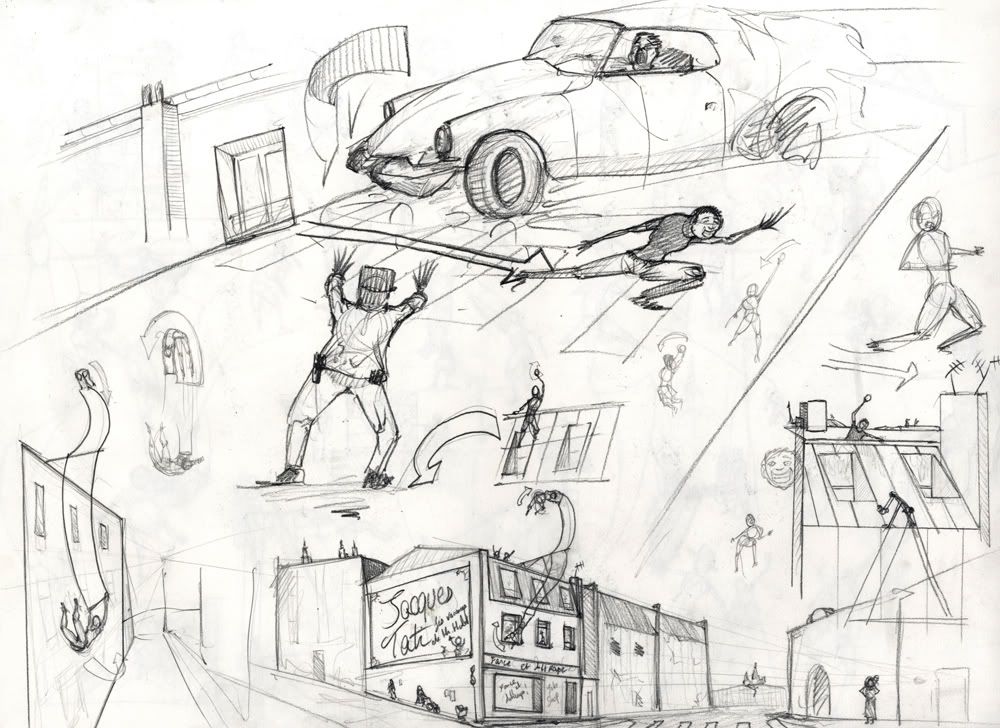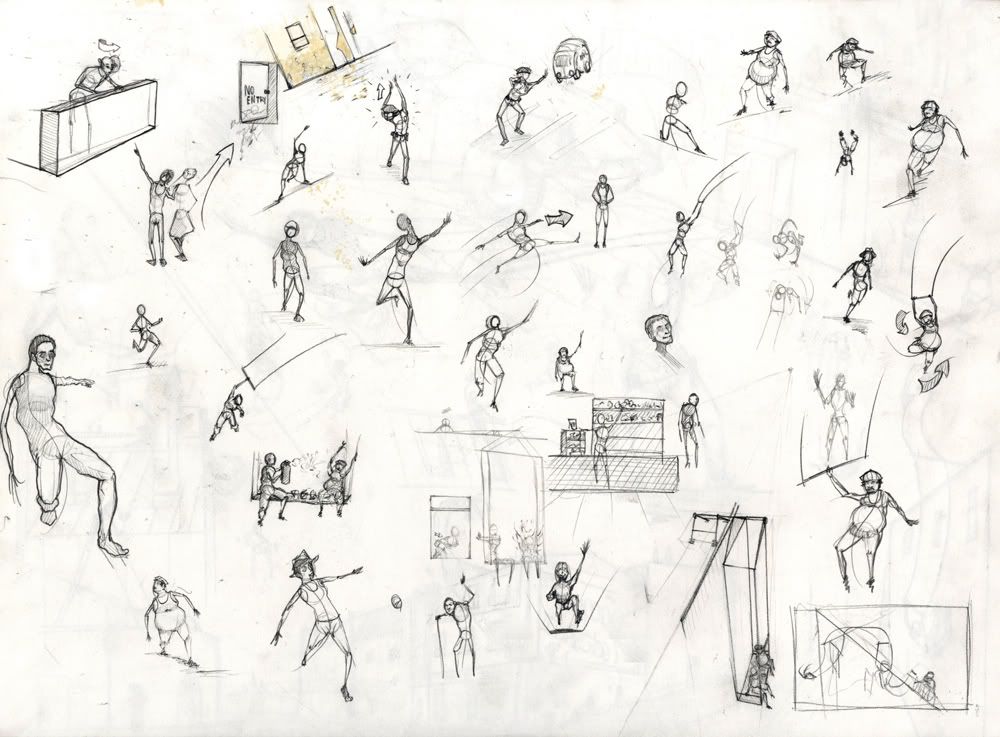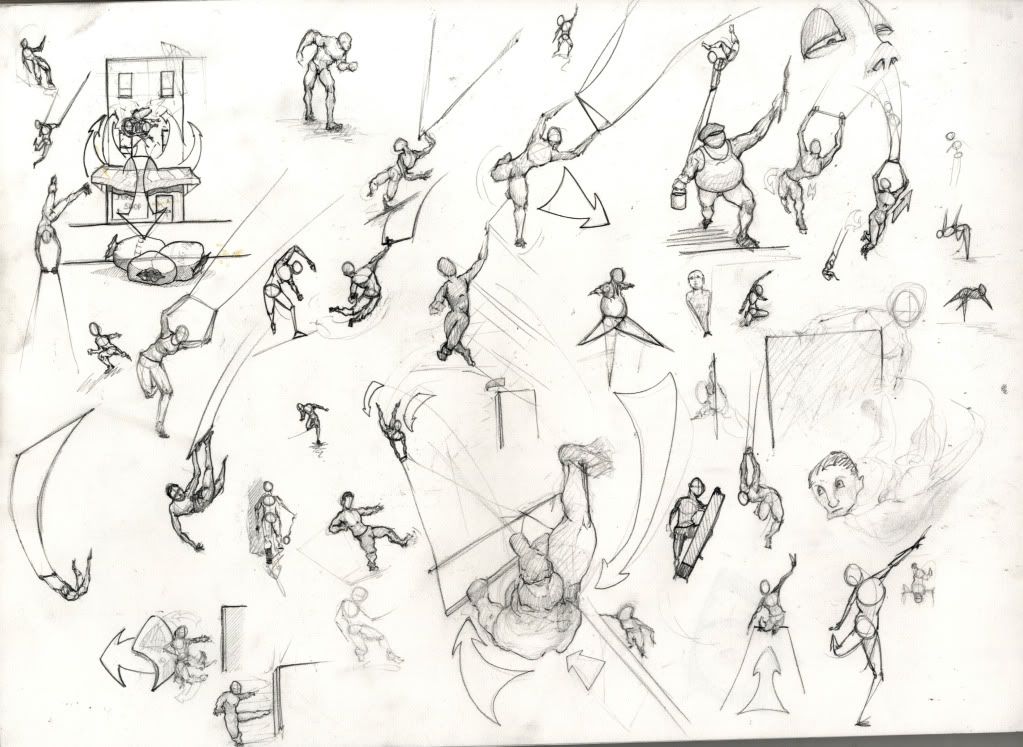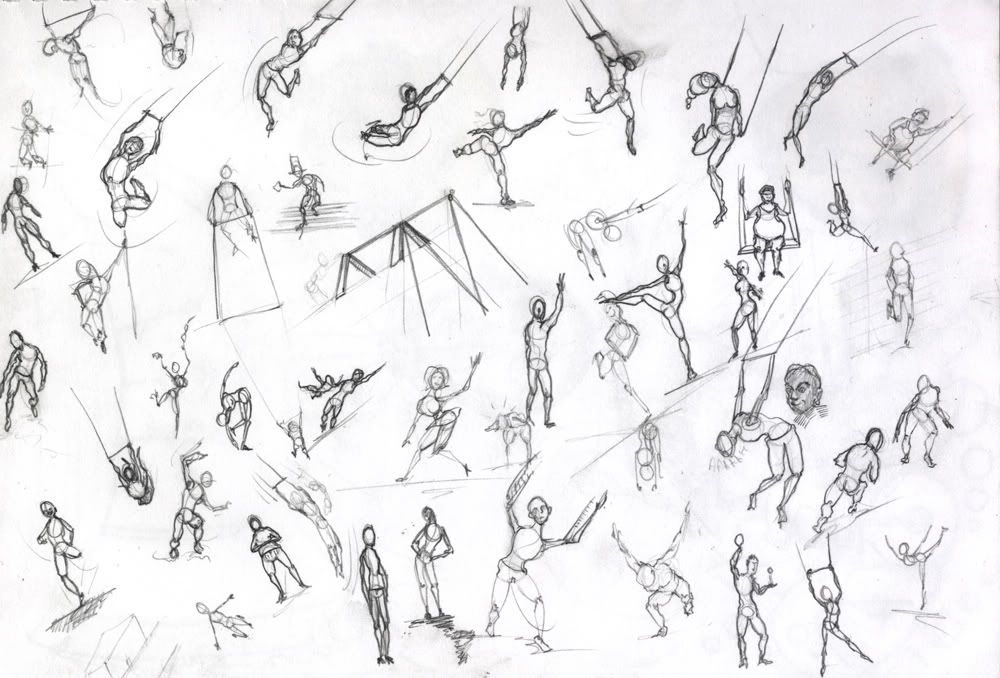The main actors, as aforementioned, will number five. The children still need some fleshing out to do, but they will come later. Here is a picture that represents my view of the children stroming out of school.
 |
| Children running on the Champ de Mars, Robert Doisneau |
I will start work on the painters first. One of them will be based on Bourvil, a genial actor who played from the 40’s to the 70’s in a comedy cinema. His acting is most of the time represented by a somewhat naïve and nice character. I want to use him as I want my story to be similar to the film he played in, funny and genuine gags. He actually plays a wall painter in
La Grande Vadrouille, which makes him perfect for my role. His face is characteristic of someone who can do a lot of face contortions. My goal though is not to copy the character of Bourvil, but to create my own. So while there are physical similarities, their characters will be different. The second, and I am not a 100% sure of the influence, will be inspired by Coluche, probably the greates french humorist. His slightly chubby look fits my vision for the second painter. As well as looking slighlty older, his face is also fit to a large amount of poses. Again I would like to precise that my drawings will not be exact copies, as I am not even sure if my skills are good enough to represent the emotions I am imagining. This is a great occasion to practice character design, something I do not do often. I might change the influences later on, but for now this will suffice. The next step with these will be the design of their worker character.
Character Sheet - I
- André Dupont
- Age: 29
- Height: 1m72
- Weight: 70 Kilos
- Hair Colour: Light Brown

André Dupont was born on the 7
th of May 1919, to Jean Dupont and Julie Magret in
Aquitaine. Jean Dupont took part in WWI, where he lost an eye. This sent to a field hospital where he met Julie Magret, then a nurse. They married right at the end of the war, the smoke not even cleared from the battlefields. André was soon born after, and was surely conceived during the poor man’s recovery. They all moved to
Paris when he was 10, coming to live next to Bastille, in the 11
th Arrondissement. In his youth he enjoyed painting, covering the walls of his room in what would become a vocation. Painting walls when from random childish designs to efficient coverings of paint. He left school at 16, becoming an aide to Mathieu Delembert, who owned a small wall painting company called
Peinture Bastille. In this first test of life, André would follow his boss, repainting walls and cleaning up old buildings. He worked with Mathieu for 10 years, rising through the ranks. After WWII, where he avoided conscription, he left the enterprise intent on starting his own. He met Maurice Pichot, another employee would had been in the company for a year, and convinced him to associate.
Character Sheet - II
- Maurice Pichot
- Age: 38
- Height: 1m64
- Weight: 76 Kilos
- Hair Colour: Dark Brown

Maurice Pichot was born on the 12
th of December 1908, to Pierre Pichot and Emilie von Steinbeck in
Auvergne. His mom was originally from
Germany, and stayed in
Paris after she had followed her then husband, Albrecht von Steinbeck, into
France in the 1870 war between
Prussia and
France. Pierre Pichot was a simple farmer who add been conscripted into the French army and sent to
Paris. There he escaped and fled to
Strasbourg, where Emilie was staying. They met and ran off together, coming back to
Paris, where there first son, Jules, was born. Maurice soon followed. Maurice was young when he left school, heading to work back in
Auvergne on his father’s farm now held by his brother-in-law, George. There, Maurice helped fix the farm repainting the whole complex on his own, which consisted of two large barns and multiple small ones, plus the main Master house. After a few years working around the village painting and repairing old houses, he moved back to
Paris in 1944, after the liberation of
Paris, joining a small wall painting company called
Peinture Bastille, owned and directed by Mathieu Delembert. He stayed there only one year, and after meeting a young co-worker called Andrée Dupont, decided to associate with young man in creating there own company.
In Beetween Story
This is where the story of our two partners starts. Their first meeting was pleasant, as both had fathers in the military and therefore had topics on which to discuss. The meeting took place at a bistrot called
Chez Gaston, a place famous for its copious salads. Soon enough the pleasant nature of both men facilitated their association. Their company which they named
Dupont-Pichot Peinture found it easy to find clients, the devastated country in severe need of repairs. For the next years, they where highly busy working for all types of clients in
Paris and sometimes in the province.
We are today in 1953, and Dupont-Pichot Peinture have just received a commission to repair and repaint the façade of joke shop, located at the Rue des Ecoles, in the 5th arrondissement, a normal job, similar to so many before. The day is the 15th of June 1953. It is the last day of school for the children of the public primary school located in front of the shop. They headed there in the morning, around 9 o’clock, starting from the bottom up. By lunch the bottom floor was done, and they had raised their platform to the second level, which they finished by 2:30, pausing for a break. They raised the platform at 2:53 and had their break with a man who lived on the third floor. They shared some wine, and Maurice would have his usual cigarette.
The animation starts here, with the bell ring of the school across the road, which spells the start of 2 month of vacation for the young children studying there.


